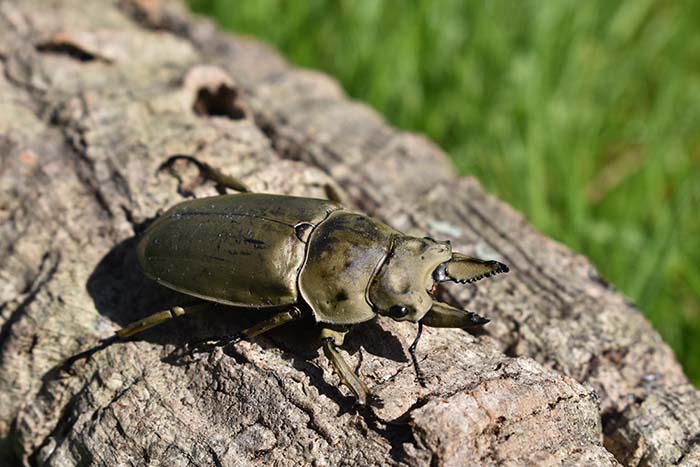Allotopus mollenkampi
Adult Pair
Species Info:
Origin
Lifestyle
Temp
Humidity
Leg Span
Disposition
Suitability
Looking for a unique and fascinating invertebrate? Consider keeping Stag Beetles!
Beetle keeping, rearing and breeding is one of the most rewarding projects on offer across the hobby. With a little effort and patience, Stag Beetles can be raised successfully and make very active and entertaining additions for any invertebrate enthusiast.
Hopefully the guide below and indeed the addition of our stag beetle starter kit will no doubt get you on the right path with it,
Starting with Adult Beetles:
It is more likely with Stag Beetles you will start with an adult pair. Stag Beetles differ from Flower and Rhino Beetles in that rather than laying eggs into the substrate the females mostly lay into logs and the larvae are raised on a pure decayed wood substrate.
Inside the starter kit you will have two egg laying logs which will need to be soaked overnight and then allowed to stand and drain for 24 hours before use.
If you have bought your Beetles at the same time you can temporarily house them individually in the rearing pots supplied with a little bit of substrate and a beetle Jelly each making sure there is an air hole in the lid. The males of certain species can potentially pop the lid open and female could also potentially chew through the fine plastic so stand the pots inside the Invertarium till the laying logs are ready.
Once your logs have drained and they are ready to use pour the first bag of Decayed wood substrate into the Invertarium and using a heavy item like a brick of hardback book compact the substrate into the bottom of the enclosure as solid as you can being careful not to crack the bottom. The reason why we do this is some species like Rainbow Stags (Phalcragnothus mulleri) and species from the genus Prosopocoilus will also lay into this bottom layer as well as the laying logs.
Add your two logs on top of this first layer next to each other and then using the second bag of substrate fill substrate around the logs till they are almost totally submerged. Over time the substrate will lose moisture so it will need periodic spraying with the atomiser mister, the base layer and logs generally maintain their moisture and shouldn’t be disturbed.
Add the final Leaf layer on top. This will help maintain the moisture level below and allow beetles that have toppled over to right themselves. Add the Jelly pot holder and Jelly with is what the adults feed on. Once the female is mated she is rarely seen as she is burrowing into the logs to lay eggs.
Raising the Larvae:
After your Beetles have reached the end of their lifespan you will need to recover the larvae 30 days later, the reason why we wait 30 days as by this point all eggs should of hatched.
Using a knife or a chisel carefully split the logs and remove the larvae and put to one side, also check the bottom layer for any additional larvae.
Using the decayed wood substrate from around the log and base layer fill the rearing tubs with the substrate and compact them down as tight as possible and add one larvae per tub.
Some of the smaller species will go full term to adult in these tubs without a needing a substrate change, if the substrate looks like it contains more frass (Poo) then substrate empty the pot and replace with 50% new substrate, compact it down and add the larvae.

